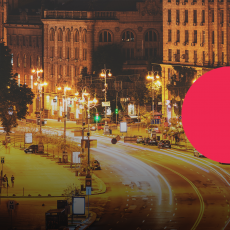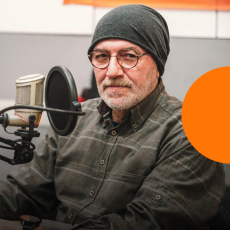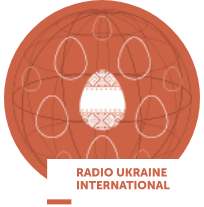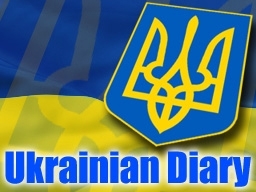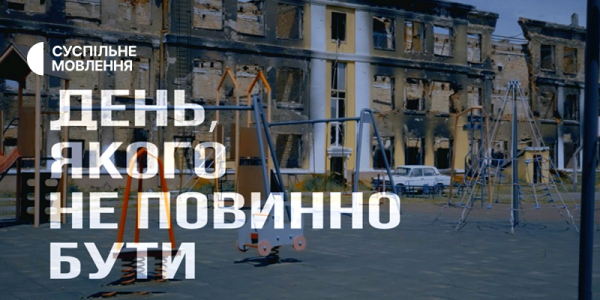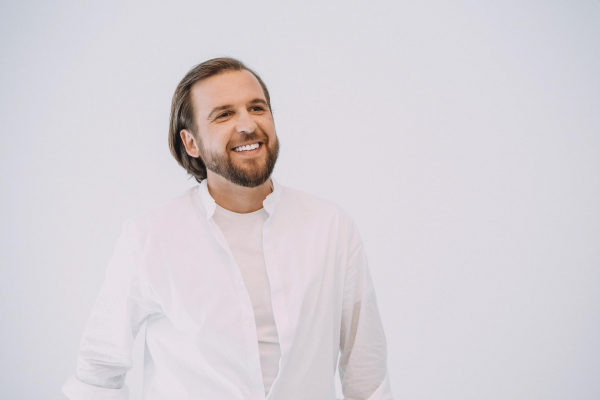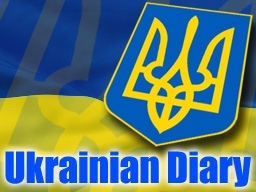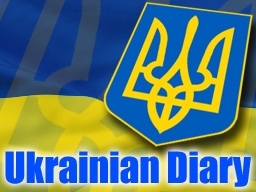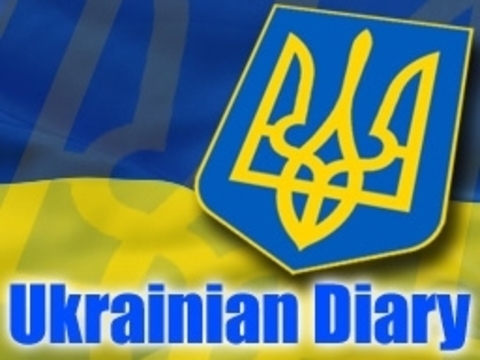Situation in the Donbas war zone: weekly sum-up
In the Donbas war zone ceasefire violations were recorded regularly over the past week. According to the Ukrainian Defense Ministry’s reports, the largest number of enemy strikes was recorded on Tuesday, mostly in the Luhansk sector of defense. The Ukrainian army’s positions near the village of Luhanske and in the area of Svitlodarsk Bulge, southwest of Luhansk, have suffered the most from enemy activity. Only on Wednesday the situation got stabilized and no shooting took place all along the engagement line. By the end of the week the enemy forces resumed their strikes, using the banned heavy weapons, namely big-caliber mortars, leaving several Ukrainian soldiers wounded as a result.
On Tuesday Deputy Chief Monitor of the OSCE SMM Alexander Hug reported from the city of Donetsk, and talked about civilian casualties that occur namely at the entry-exit checkpoints in vicinity of the contact line. One of them had been recorded just a few days before near the town of Olenivka (20 km south of Donetsk), when a man was killed and another injured as they traveled on a bus, as we reported earlier this week. Alexander Hug also warned about the augmenting violence and military buildup in the Donbas war zone. “The findings by the misson, including observation and registration of violations of the ceasefire regime indicate there is no will to end the fighting. What is even worse, the civilian population continues to bear the brunt of all this. The victim yesterday in Olenivka is unfortunately just one of those who suffered unnecessarily in the ongoing violence.”, said Alexander Hug.
Meanwhile the Parliamentary Assembly of the Council of Europe has adopted a resolution on the humanitarian consequences of the war in Ukraine, calling on all its member states to step up their political co-operation in order to put an end to this conflict and the suffering of civilians. Adopted on January 23rd, the resolution draws attention namely to restricted freedom of movement and humanitarian access imposed by the illegal armed groups,pointing out the lack of security, problems with water and energy supplies and access to social benefits and medical care by the inhabitants of the war zone. The Assembly urged Russia, Ukraine, and the international community to take measures for humanitarian assistance to the affected population.
Among other issues, the text of the document mentions the situation in the illegally-annexed Crimea as well, noting the preoccupying developments on the ground, and condemning the Russian policy of shifting the demographic composition of Crimean population by repression of pro-Ukrainian inhabitants especially Crimean Tatars, along with increasing migration of Russian citizens to the peninsula.
Ukraine-related talks at the WEF in Davos
During the Annual Meetings of the WEF in Davos (Switzerland)Ukrainian Breakfasthas taken place Thursday morning, where the Ukrainian President Poroshenko, Foreign Minister of Canada Chrystia Freeland, First Deputy Managing Director of the IMFDavid Liptonand others spoke and discussed the issues of common future in the changing world that is the major topic of this year’s forum. During the session, Petro Poroshenko was speaking about the latest developments and current plans, namely regarding the creation of Ukrainian anti-corruption court institution.
Ukraine’s economic situation and prospects for macroeconomic support have also been discussed. “Ukraineshould take advantage of the current favorable external environment to accelerate reforms”, Managing Director of the International Monetary FundChristine Lagardetold reporters following a meetingwith President Petro Poroshenko in Davos on Wednesday. This is needed to improve people's living standards in a sustainable manner, according to her. “I just had the pleasure of a very productive discussion and meeting with President Poroshenko and his team members, that really gave us a chance to take stock of all the measures that have already been taken and hopefully, with the other measures the implementation of which we have discussed and the planning of which we have discussed and will continue to work on together, will lead us to the completion of the review that is currently pending," - IMF Managing Director Christine Lagarde commenting on Ukraine’s prospects and measures for the completion of the review under the IMF-supported program, pending due to the country's failure to meet a number of conditions set by the IMF.
During a panel discussion on investment in Ukraine on Thursday, President of the European Bank for Reconstruction and Development Suma Chakrabarti spoke about improved governance and the importance of reforms. According to him, progress had been made in Ukraine, yet corruption was still a barrier to foreign direct investment. The EBRD President said he was confident that Ukraine’s political leaders had the courage to carry on driving forward reforms despite the approaching elections.
At a panel on new agenda for the European continent on Friday, Ukrainian President together with his Polish and Lithuianian counterparts Andzej Duda and Dalia Gribauskaite have discussed namely the issues concerning Russia as the energy supplier of Europe, and the prospects for a unified European energy policy. Noting that Ukraine had stopped direct gas supplies from its neighbor, Poroshenko told his fellow participants that Nordstream 2 project was entirely about politics, and not about economy or energy security. “There is another purpose of ‘Nordstream 2’: to divide Europe. What is the main achievement of the EU after Brexit? After the election campaign in 2016-2017, when everybody waited for that populist eurosceptics to come to power in Europe, who promoted effective Russian strategy to divide Europe, to make it weaker, fortunately all Europeans were responsible enough, united enough, strategic-thinking enough to keep unity. Of course, Russia was very disappointed. In that situation, Nordstream is a test for unity of Europe.”, said President Poroshenko.
New searches and detentions in the Russian-occupied Crimea
In the morning of January 25th, 2 more activists of Crimean Tatar movement have been detained. First, the houses of Enver Krosh and Ebazer Islyamov were searched, before the dawn, afterwards both were arrested and taken to police departments in the city of Djankoy and Nyzhniohirsk respectively.
One of them Enver Krosh had already been detained in 2015 and electrocuted, his family told.
Ekrem, his brother, commented on his detention on Thursday: “I got worried because 2 years ago he was electrocuted after being detained by deceptive means: they called him in to the police department saying there were some questions to figure out. Then he’d been electrocuted, a bag put on his head, beaten and theatened.” According to Emile Kurbedinov, human rights defender, those threats were related to Kroshes refusal to collaborate with the occupation authorities. According to him, Enver Krosh is also one of those activists who’d made single-person protest actions in Crimea. Those activists have become the group of Crimean Tatar people with pro-Ukrainian stance that are so often targeted by the occupation authorities.
While just on the previous day, Crimean Tatar leaders Ilmi Umerov and Ahtem Chiygoz, who’d been brought to Turkey and released from imprisonment in October last year, addressed the European Parliament, urging not to loosen sanctions against the RF. “Being Ukrainian citizen in Crimea today is a threat to oneself and their loved ones. Today the detentions held in Crimea illustrate ruthless terror of the Russian state. Fordecadeswe’ve been exercising our right to one’s life, one’s motherland and freedom. As you managed to advocate for our liberation, I beg you for the same united effort to save our peoples and our motherland,” said Deputy Head of Crimean Tatar Mejlis.HeaddedthatCrimea had become a colony of Russia, where historical legacy’s being destroyed and ecology dilapidated. Fearisplantedinthemindsofchildrenandadultsso thattheywould rememberandsurrender, said AhtemChiygoz.
Ukraine’s Unity Day
On January 22 Ukraine Marked the Day of Unity. On this day in 1919, Ukrainian lands that were previously divided between two Empires, Russian and Austro-Hungarian, got united into a single country, the predecessor of modern Ukraine. Back then, the two halves of Ukraine existed within two separate states, they were called – the Ukrainian People’s Republic and the West Ukrainian People’s Republic. Unity was a dream of many generations of Ukrainians who throughout centuries were engulfed by different empires on their borders, so the two republics rather quickly merged into one country. However Ukraine was unable to gain independence and in December 1920 the Ukrainian SSR of the Soviet Union was established comprising most of the territory of the Ukrainian People's Republic.The territories of the West Ukrainian People's Republic became mostly part of Poland. In 1939, the territories of both became part of the Ukrainian SSR.
Yet the significant date of our history was now forgotten - in 1990, Ukraine celebrated its largest Act of Unity. On that day, residents of many towns and villages between Kyiv and Lviv (Western Ukraine) stood together in a 482 km-long human chain that symbolically tied the two cities. Since then, on this day Ukrainians from all over the country celebrate by forming human chains in symbolic acts of national unity. In Kyiv, local youth and public activists stand in a human chain across one of the bridges through the Dnieper River, which in fact cuts the country in half. Such human chains symbolize the unity of left-bank and right-bank Ukraine, the two banks that were often divided for certain historical reasons.
This date now serves as a reminder of the importance of unity and as a guide to avoid the mistakes of the past President Petro Poroshenko said in his address to the nation on Monday. “We have learnt our lessons. We have analysed our mistakes. And we will not let them happen again, we will not let the enemy destroy the country from the inside. In our fight against the aggressor, we feel strong support from our international partners, and this is a fundamental difference between the situation as it is today and the one a hundred years ago,” said Petro Poroshenko.
On this day President Petro Poroshenko and his wife Maryna have also commemorated the first victims of the Revolution of Dignity Serhiy, as January 22 marks the sad anniversary of the first fatalities at the Euromaidan. Serhiy Nigoyan and Mikhail Zhiznevsky were the first fallen heroes of what later became known as the Heavenly Hundred. The presidential couple laid flowers to the memorable signs of Nigoyan and Zhiznevsky on Hrushevskoho Street. They honored the memory of the victims with a minute of silence.
Studying Holocaust and commemorating the victims
On January 27, the world community pays homage to the victims of Holocaust that affected many people of the Jewish origin during World War II. The date is titled the International Day of Commemoration in Memory of the Victims of the Holocaust. It commemorates the genocide perpetrated by the Nazi regime and its collaborators that resulted in the death of an estimated 6 million of Jewish people, 200,000 Romani, 250,000 mentally and physically disabled people and 9,000 homosexual men. It was established by the UN in 2005 and is marked annually. It also commemorates the day when the Soviet troops liberated the Nazi concentration and death camp Auschwitz-Birkenau in Poland on January 27, 1945. In Ukraine, Babi Yar became the symbol of Holocaust. A large ravine on the northern edge of the city of Kyiv, it became a mass grave of victims, mostly Jews, killed there by the Nazi German SS squads between 1941 and 1943. It therefore is the site associated with the first stage of killing during the Holocaust.
After the initial massacre of Jewish people, Babi Yar remained in use as an execution site for Soviet war prisoners and Roma people. The Soviet official accounts after the war present the figure of 100,000 dead. Yet the true number may never be known.
On the eve of the commemoration day Kyiv hosted a presentation of a study guide for history teachers prepared by Ukrainian historians. The book includes evidence on the tragedy of Babi Yar and recommendations for educators on presenting the topic in the context of the national history of the 20th century. Its edition is supported by the National Institute of Remembrance and the charity initiative “Jewish-Ukrainian Meeting”. Anatoliy Podolsky, head of Ukrainian Center for Holocaust Studies told reporters about the context of its release. “This study guide for school teachers is a result of joint work by a number of authors, it’s also a result of cooperation between state bodies and NGOs. The book titled “Babi Yar – Memory in the Backdrop of History” is based on materials and investigations presented earlier at the namesake exhibition hosted by the Kyiv History Musem, and a documentary film focused on the Babi Yar tragedy. It’s a significant source for school teachers. Actually, the major purpose for the Ukrainian center for Holocaust Studies, which took the most active part in editing the book, was preserving the memory on the tragedy of Ukrainian Jews during World War II. Our task is to investigate this topic and spread the information we discovered,” said Anatoliy Podolsky.
